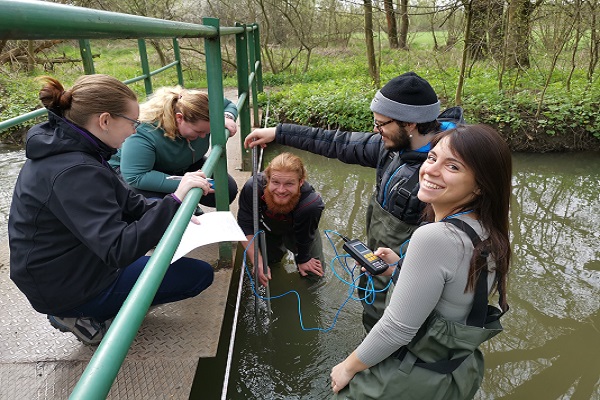1. Temperature as an ecological factor, adaptation of animals. Light as an ecological factor, adaptation of animals. Humidity as an ecological factor, adaptation of animals. Atmospheric pressure and air flow as an ecological factor, adaptation of animals.
2. Water as an ecological factor. Conditions of life in stagnant waters. Conditions of life in flowing waters. Ecological factors of bogs. Ecological factors of periodic waters and saline waters.
3. Soil as environment. Ground edaphone.
4. Food. Classification of adaptations - physiological, morphological and ethological adaptations. Intraspecific relationships.
5. Migration of animals. Interspecies relations. Animal communities. Quantitative features of zoocenoses. Structural and relational features of zoocenoses.
6. Reproduction, estrus, reproductive types, reproduction cycles in mammals, birds, amphibians and reptiles. Growth and development of young in mammals, birds, amphibians and reptiles.
7. Radiation, modification of solar radiation and adaptation of plants to radiation. Temperature balance, plant temperature and plant adaptation to temperatures. Effect of atmospheric composition on plants.
8. Water balance of habitat, absorption, transpiration and water balance of plants. Plant resistance to drought, specific survival time. Water as the environment of plants, adaptation of plants to the aquatic environment.
9. The importance of plants for soil formation, the influence of relief and plants on pedogenetic processes. Dependence of plants on soil chemistry.
10. Photosynthetic capacity of plants, photosynthesis efficiency coefficient, dependence of net photosynthesis on light and heat. Growth analysis of plants, its meaning and application.
11. Plant population - definition, characteristics, distribution of the population. Plant demography. Population structure. Interrelationships between individuals and plant populations. Plant population strategies.
12. Ecology of the plant community - definition, delimitation. Horizontal and vertical structure of the plant community. Stability of the plant community, zonal, azonal and extrazonal vegetation. Analysis of community structure, life forms of plants. Vegetation potential, natural, close to nature, reconstructed natural, natural.
13. Changes in the structure of the plant community over time. Ecological succession of plants, primary and secondary succession, principles and importance in the ecosystem. Invasive and expansive plant species, significance.
2. Water as an ecological factor. Conditions of life in stagnant waters. Conditions of life in flowing waters. Ecological factors of bogs. Ecological factors of periodic waters and saline waters.
3. Soil as environment. Ground edaphone.
4. Food. Classification of adaptations - physiological, morphological and ethological adaptations. Intraspecific relationships.
5. Migration of animals. Interspecies relations. Animal communities. Quantitative features of zoocenoses. Structural and relational features of zoocenoses.
6. Reproduction, estrus, reproductive types, reproduction cycles in mammals, birds, amphibians and reptiles. Growth and development of young in mammals, birds, amphibians and reptiles.
7. Radiation, modification of solar radiation and adaptation of plants to radiation. Temperature balance, plant temperature and plant adaptation to temperatures. Effect of atmospheric composition on plants.
8. Water balance of habitat, absorption, transpiration and water balance of plants. Plant resistance to drought, specific survival time. Water as the environment of plants, adaptation of plants to the aquatic environment.
9. The importance of plants for soil formation, the influence of relief and plants on pedogenetic processes. Dependence of plants on soil chemistry.
10. Photosynthetic capacity of plants, photosynthesis efficiency coefficient, dependence of net photosynthesis on light and heat. Growth analysis of plants, its meaning and application.
11. Plant population - definition, characteristics, distribution of the population. Plant demography. Population structure. Interrelationships between individuals and plant populations. Plant population strategies.
12. Ecology of the plant community - definition, delimitation. Horizontal and vertical structure of the plant community. Stability of the plant community, zonal, azonal and extrazonal vegetation. Analysis of community structure, life forms of plants. Vegetation potential, natural, close to nature, reconstructed natural, natural.
13. Changes in the structure of the plant community over time. Ecological succession of plants, primary and secondary succession, principles and importance in the ecosystem. Invasive and expansive plant species, significance.
